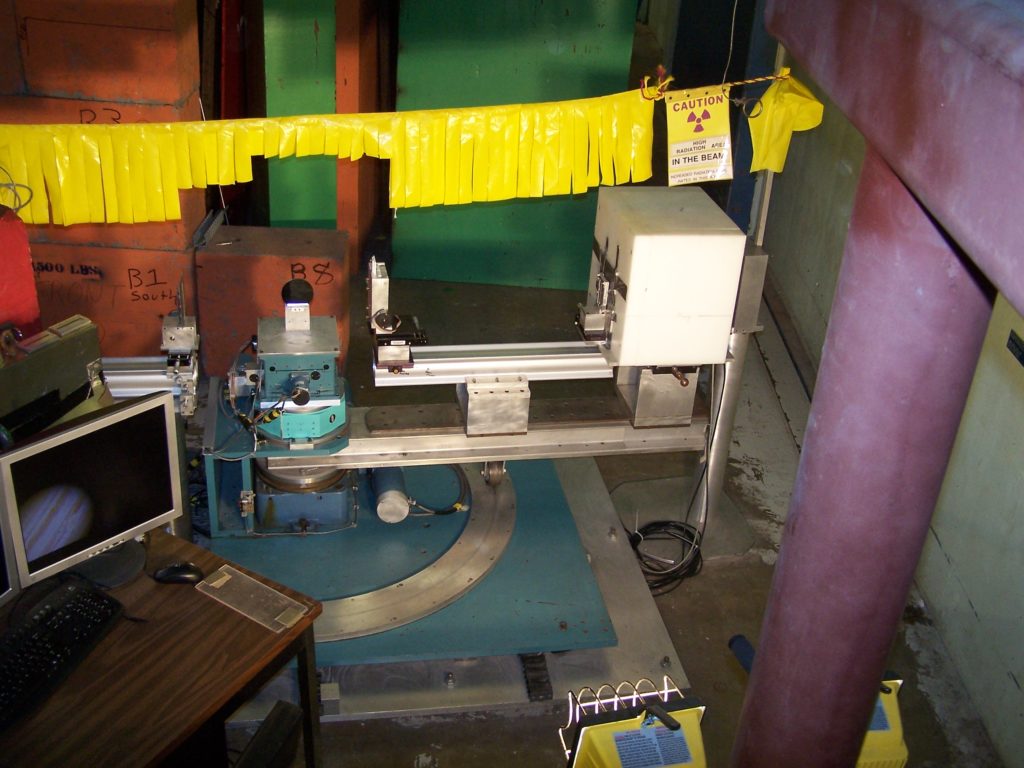The Neutron Reflectometer is the only instrument of its kind stationed at a U.S. university campus. This instrument employs a vertically focusing PG monochromator (coupled with a pre-monochromator PG filter) providing neutrons of wavelength λ=2.349 Å. The scattering geometry is in the horizontal plane, so the sample is placed vertically. Four slit assemblies with variable slit sizes allow variable collimation, i.e. variable resolution, for a wide variety of studies of thin films and interfaces. The instrument can be outfitted with magnetic supermirrors before and after the sample, i.e. polarizer and analyzer, to carry out neutron spin analysis reflectometry for investigations of magnetic thin films and interfaces. With a dynamic range of >106, the instrument is competitive with other neutron reflectometers at other neutron sources. Neutron reflectometry derives its unique capabilities by implementing narrow slit masks separated as far as the geometry will allow to strongly limit the divergence of the incident neutron beam. With this instrument, one can study surfaces and interfaces of magnetic thin films, hydrogeneous thin films, multilayers, etc. on a length scale of typically 2 – 100 nm. The scientific applications range from surface chemistry, solid thin films and multilayers, polymers, nanostructures, to superconductivity and many others.

- Monochromator: PG (002), vertically focusing, mosaic width 1.3°
- Wavelength: 2.349 Å
- Wavelength resolution: 1.5% Δλ/λ
- Beam size (continuously variable): 0.01×70 mm2 to 12×70 mm2
- Q-range: 0.002 to 0.4 Å-1
- Q-resolution (variable with slit width): 0.02 to 0.20 ΔQ/Q
- Monochromator-to-sample distance: 1.9 m
- Sample-to-detector distance: 1.2 m
- Detector: ½” 3He-proportional counter
- Angular range for detector: 0 to 95°
- Spin-polarized capability (supermirror, spin-flippers, guide fields, etc.)
- Variable temperature and field sample environment